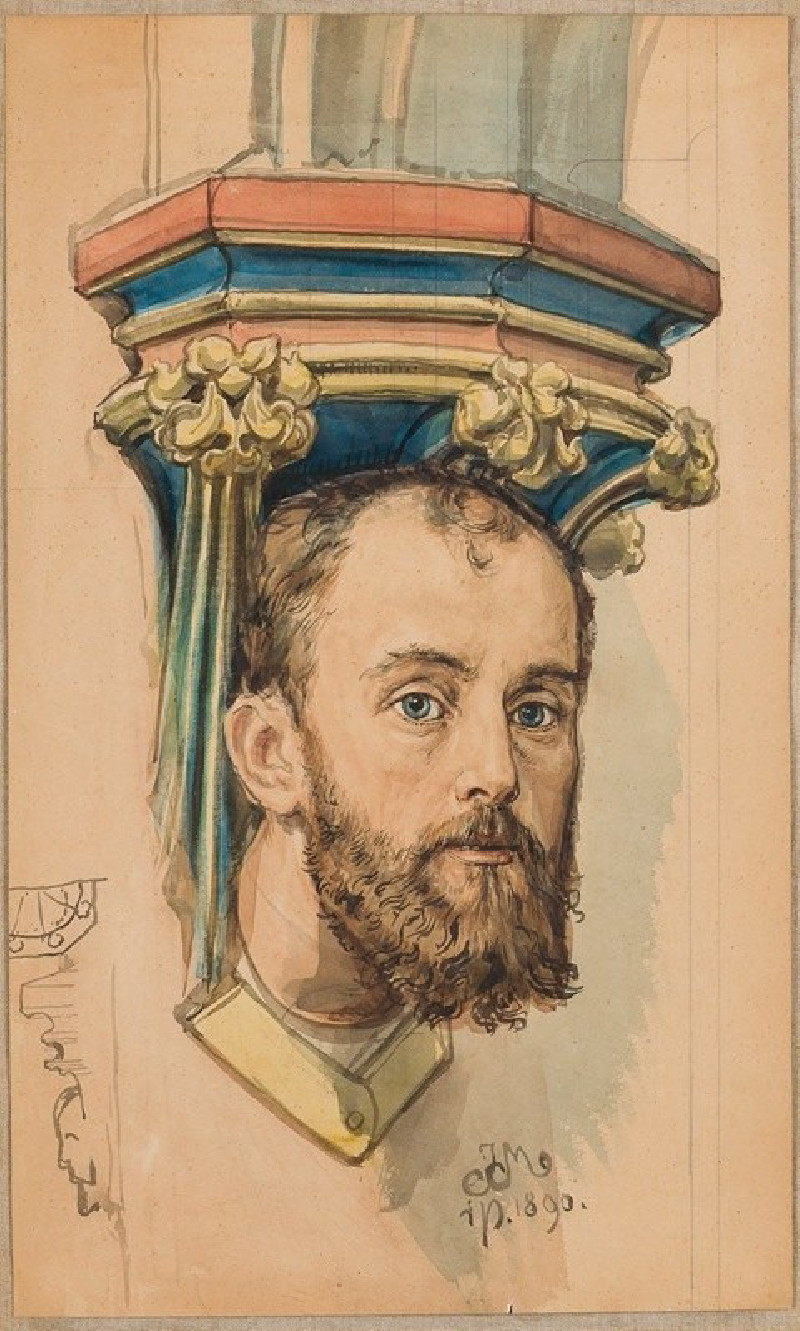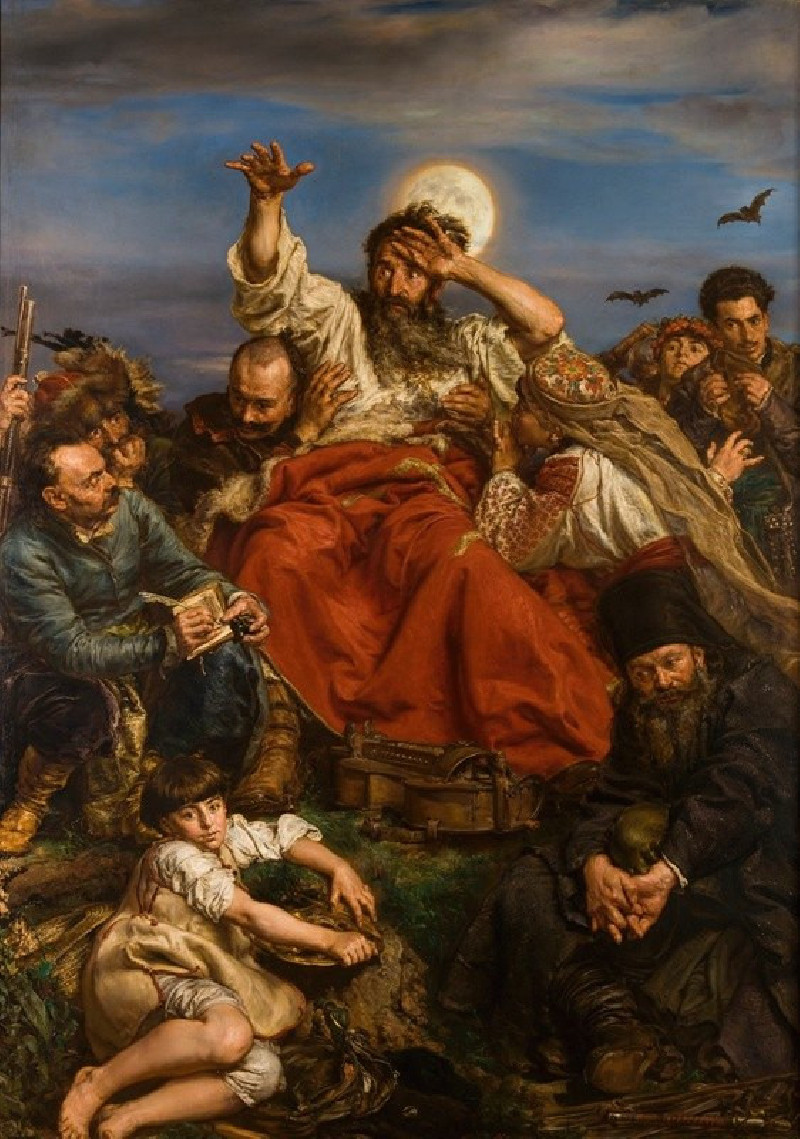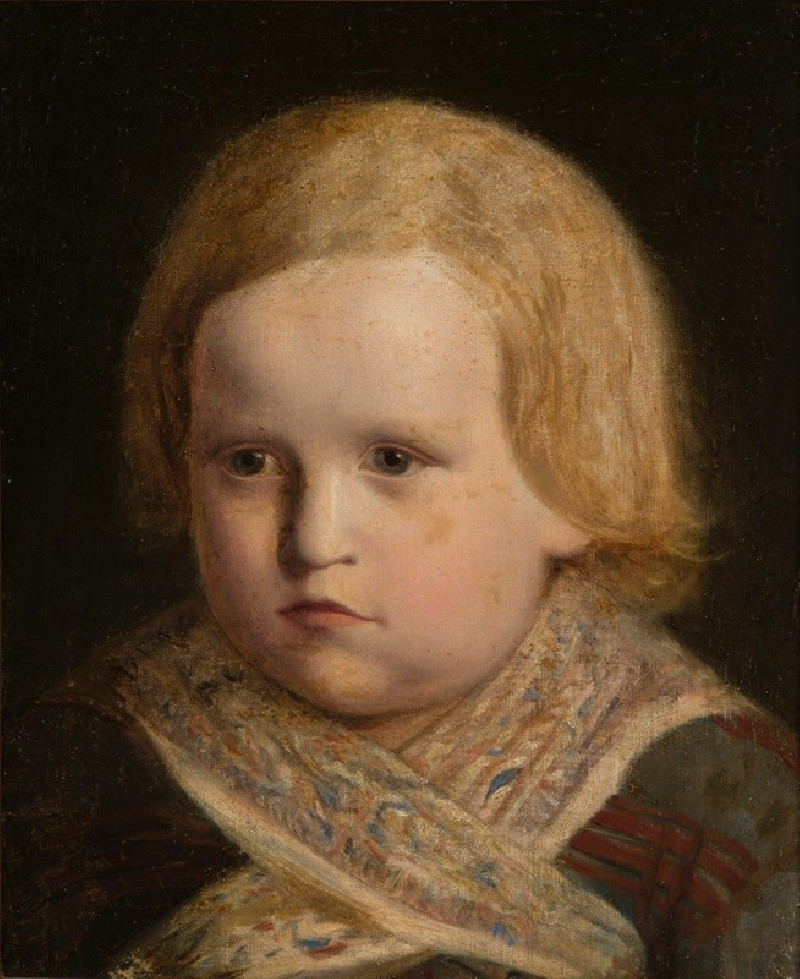Figure of an Angel Playing the Lute (1888-1891)
Technique: Giclée quality print
Recommended by our customers
More about this artwork
Jan Matejko's delightful painting titled "Figure of an Angel Playing the Lute" immediately captures the imagination with its vibrant detail and ethereal presence. Created between 1888 and 1891, the artwork portrays a celestial being, an angel, engaged in the serene act of playing a lute. This angel, with feathered wings resplendent in shades of green and red, embodies an aura of tranquility and artistic expression.The fine use of color in the angel’s attire, a rich blue robe contrasted with a warm pink undergarment, draws attention to the subject’s divine performance. The golden halo subtly glowing above the angel's head adds a layer of sanctity and ethereal beauty to the composition. Matejko’s skillful use of light watercolors enhances the delicate textures of the robes and wings, giving the figure a sense of grace and fluid motion.This painting does more than just exhibit Matejko’s mastery with a brush; it delves into the symbolic value of music in heavenly realms, suggesting the universal language of harmony and peace. The angel's focused expression, gently strumming the strings of the lute, invites viewers to a moment of reflection and calm, resonating with tones of spirituality and artistic devotion."Figure of an Angel Playing the Lute" is a testament to Matejko's versatility and his ability to evoke poignant narratives through historical and religious imagery, enriching the viewer's experience with each thoughtful detail.
Delivery
Returns
Jan Alojzy Matejko was a Polish painter, a leading 19th-century exponent of history painting, known for depicting nodal events from Polish history. His works include large scale oil paintings such as Rejtan (1866), the Union of Lublin (1869), the Astronomer Copernicus, or Conversations with God (1873), or the Battle of Grunwald (1878). He was the author of numerous portraits, a gallery of Polish monarchs in book form, and murals in St. Mary's Basilica, Kraków. He is considered by many as the most celebrated Polish painter, and sometimes as the "national painter" of Poland.














































